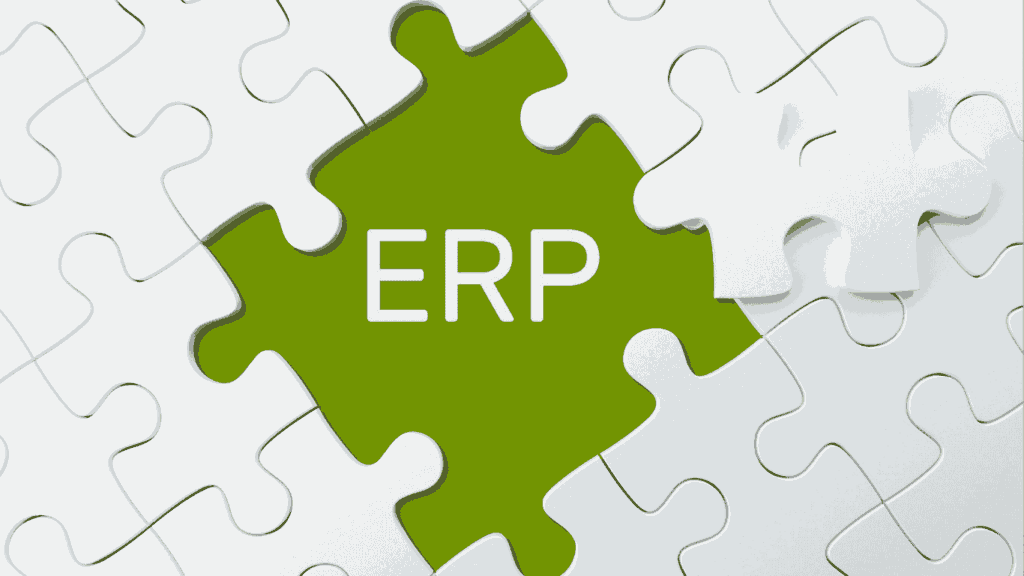Enterprise Resource Planning (ERP) systems have been the backbone of businesses for decades, enabling organizations to integrate finance, supply chain, HR, and operations. But in today’s rapidly shifting digital economy, legacy ERP is no longer enough.
In 2025, with AI, cloud-native architectures, and real-time analytics redefining how businesses operate, ERP modernization has moved from being an option to being a necessity. Companies that delay risk losing agility, efficiency, and competitiveness.
At the same time, modernization is not just about moving to a new platform. Organizations that migrate without rethinking core business processes and cleaning up their data often fail to unlock the real promise of modern ERP — advanced analytics and AI-driven insights. In other words, simply “lifting and shifting” leaves much of the value on the table.

The Evolving Business Landscape
Global supply chain disruptions, inflationary pressures, and geopolitical uncertainty demand faster decision-making. Customers expect real-time visibility into orders, logistics, and services. Businesses are embracing digital commerce, AI-driven insights, and hybrid work models — capabilities legacy ERP systems simply cannot support effectively. Without modernization, businesses face bottlenecks, slow reporting, and higher operational costs. Let’s look some of these in detail.
Tariffs Forcing Supply Chain Redesign
The 2025 tariff landscape is more volatile than many firms have experienced in decades. According to a study by MIT, nearshoring and resourcing strategies are increasing, with some firms seeing logistics-related emissions drop by 10% when moving operations closer to home.
Companies are now being forced to remap entire supply networks to avoid high duty costs, locate suppliers in lower‐tariff zones, or shift manufacturing closer to demand centers. For example, Swedish manufacturer Husqvarna recently announced it is shifting production away from China toward European plants to counter U.S. tariff increases on European imports.
Legacy ERP systems lack the agility, scenario-modeling capabilities and AI needed to assess alternative supply routes quickly or manage supplier diversification. Firms without modern ERP and strong data pipelines can’t respond in real time — which leads to margin erosion, unplanned delays, and cost overruns.
Rise of Digital Assets & Deregulation of Cryptocurrencies
Deregulation of crypto markets has led to growth of crypto names, exchanges, trading volume, and valuation. Beyond traditional investments, many firms are now managing exposure and risk associated with digital currencies and central bank digital currencies (CDBCs). For some companies, this includes holding digital assets as part of their financial asset allocation, and managing the risks associated with fiat currencies devaluation amid uncertainties.
A recent study titled “Central Bank Digital Currency and Corporate Cash-Holding Policies” by Gaunglong Zhang and Kam Chan examines how China’s e-CNY pilot has influenced how firms hold cash and short-term assets. The findings show that as CBDCs are introduced or become more credible, companies adjust their cash holdings — both in terms of liquidity needs and risk exposure.
Legacy ERPs lack capabilities to manage digital assets, their reporting on balance sheets, risk forecasting, and required compliance for disclosure.
Data Quality and Its Impact on Analytics and AI
Legacy ERPs at most organizations have grown without emphasis on data quality and integrity. External pressures exacerbate already existing challenges with data integrity, visibility, and process alignment. Without modern ERP systems that enforce strong master data management, companies face multiple sources of truth — for supplier costings, product classification (for tariffs), or financial asset reporting.
When ERP modernization fails to include data cleanup and business process redesign, companies cannot leverage AI effectively. Predictive analytics, demand forecasting, or even scenario planning become unreliable, making investment in analytics tools less valuable while growing their footprint.
Cloud ERP Unlocks Agility
Modern ERP platforms such as SAP S/4HANA Cloud (Public and Private Editions), Oracle Fusion Cloud, Microsoft Dynamics 365, and Acumatica are cloud-first. Cloud ERPs are fundamentally different from their Commercial Off-The-Shelf (COTS) counterparts in maintainability, scalability and extensibility.
Maintainability of Cloud ERP - Always Updated
All cloud ERP platforms have shorter release cycle with smaller increments. Most providers upgrade them automatically or offer shorter time to consume the update. Hence, cloud ERPs remove the costly and disruptive upgrade projects. Businesses can run the latest and standardized processes.
Scalability of Cloud ERP - Flexible
Most cloud ERPs are sold as Software as a Service (SaaS). Businesses typically pay for what they use, and expand globally with ease. Commercials and licensing models are flexible and measurable. Businesses have to neither support extensive audits nor pay for unplanned true-ups. Infrastructure and runtimes also scales automatically – both horizontally and vertically, which means that most cloud ERPs are truly elastic.
Extensibility of Cloud ERP - Integrated and Expandable
Cloud ERPs come with large and diverse ecosystem of partner solutions to expand the core platform and integrate it seamlessly with AI, IoT, and digital commerce platforms. Businesses can subscribe to these marketplace products and immediately unlock the new business functionalities.
Gartner estimates that over 80% of enterprises will have migrated ERP workloads to the cloud by 2027.
AI and Automations
ERP equations are simple. Legacy ERP = Static Reporting, and Modern ERP = Automation and Predictive Intelligence. AI-powered forecasting helps finance leaders predict cash flow, demand, and risks. Intelligent process automation reduces manual tasks in HR, procurement, and supply chain. Natural language queries (chat with your ERP!) make insights accessible.
This shift transforms ERP from a system of record to a system of intelligence.
Risks of Stalling
Organizations that delay ERP modernization face the risk of falling behind in enterprise security and competitiveness. Legacy systems lack advanced threat protection and have higher security vulnerabilities. Businesses are often forced to adopt new processes and requirements – which leads to costly customizations and makes the make upgrades painful and expensive day by day. Competitors with modern ERPs make faster, data-driven decisions as the giants of the past loose market share.
In a nutshell, sticking with legacy ERP is a competitive disadvantage in 2025.
User Experience and Mobility
Old ERP systems are complex, clunky, and require specialist training. Modern ERP platforms have mobile-first design with built-in dashboards and KPIs. These ERP solutions have intuitive interfaces and personalized UX based on role or persona.
With strong emphasis on employee experience, a modern ERP boosts productivity, adoption, and employee satisfaction.
Conclusion
ERP modernization is not just a technology upgrade — it is a strategic enabler of resilience, agility, and growth. In 2025, with markets shifting faster than ever, organizations must embrace cloud, AI, and modern user experiences to stay competitive.
At Process Paramarsh, we help businesses transform ERP into a powerful engine of innovation.


